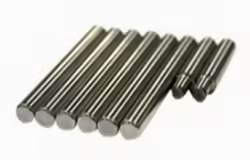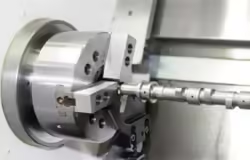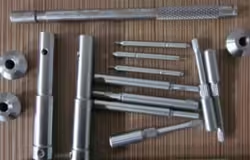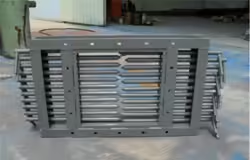
Billet Steel vs Forged: 4 Reasons to Choose the Best for You
Table of Contents
Introduction
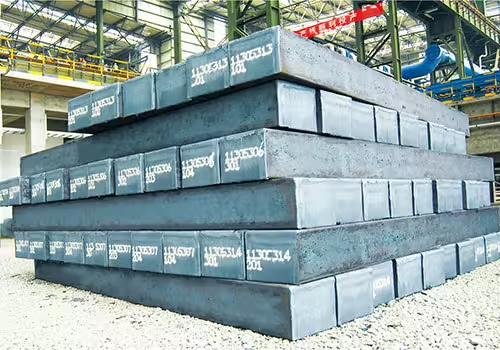
When choosing the right metal for critical applications in construction, automotive, or manufacturing, the debate of billet steel vs forged becomes a crucial consideration. These two types of steel offer unique characteristics, and making the right decision can significantly impact the performance, durability, and cost-efficiency of your project. In this blog, we will explore the key differences between billet steel and forged steel, helping you make an informed decision tailored to your specific requirements. While both materials have their advantages, billet steel often stands out due to its consistency, machinability, and structural integrity.
What Is Billet Steel and How Is It Made?

Billet steel is a semi-finished solid steel product created by continuous casting or hot rolling of ingots. It usually comes in a square or rectangular cross-section and serves as a precursor for various products, including rods, bars, and structural components. The production of billet steel involves melting raw materials in a furnace, followed by casting into molds and then hot rolling into the desired shape.
One of the reasons billet steel is favored in the ongoing discussion of billet steel vs forged is because it offers a high degree of uniformity and control during the manufacturing process. Its clean internal structure makes it suitable for precision machining and complex engineering applications, such as aerospace components, automotive frames, and medical equipment. In contrast to forged steel, billet steel ensures greater predictability during fabrication. The debate surrounding billet steel vs forged often highlights billet steel’s superior reliability and consistency.
Key Advantages of Billet Steel:
- High structural integrity
- Better grain uniformity
- Ideal for CNC machining
- Lower material waste during processing
What Is Forged Steel and How Is It Formed?
Forged steel is created by applying compressive forces to shape metal using hammering or pressing. This process refines the grain structure and increases the strength of the material. Forging can be done either hot or cold depending on the desired properties and application requirements.
While forged steel is known for its toughness and fatigue resistance, it often involves more intensive labor and is typically used in applications where impact resistance is critical. However, the variability in grain flow and internal defects can sometimes affect precision, making it less suitable for specific applications that demand exact dimensions. This is an important consideration when comparing billet steel vs forged options. Engineers often prefer billet steel vs forged alternatives when consistent outcomes are essential.
Key Characteristics of Forged Steel:
- High strength and toughness
- Good fatigue resistance
- Suitable for heavy-duty applications
- Often requires post-processing
Billet Steel vs Forged: 4 Reasons Billet Steel Might Be the Better Option
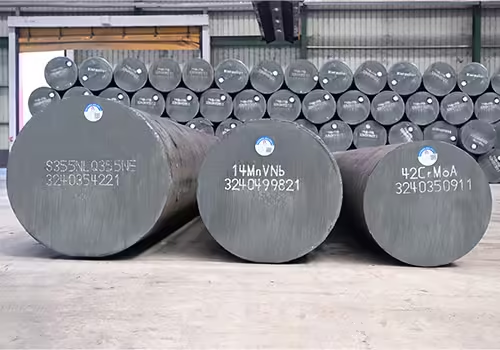
1. Superior Precision for Machining
In the comparison of billet steel vs forged, one major reason to lean toward billet steel is its compatibility with precision machining. Billet steel has a cleaner and more consistent internal structure, allowing for more accurate cuts and finer details, especially in CNC and lathe work. This level of control can be crucial in producing parts that must meet tight tolerances, such as engine blocks, transmission parts, and aerospace fasteners. When looking at billet steel vs forged, the ability to machine with such precision gives billet steel a strong advantage.
2. Better Surface Finish and Appearance
Because of its uniformity and minimal internal defects, billet steel parts generally have a smoother surface finish compared to forged steel. This is particularly beneficial in industries where aesthetics and smooth finishes matter, such as automotive customization, structural design, and architecture. In the debate of billet steel vs forged, visual appeal can be a deciding factor for many consumers and engineers. The clean and polished look of billet steel often wins favor in billet steel vs forged comparisons.
3. More Consistent Material Properties
Billet steel offers consistent material properties throughout the cross-section, which leads to more predictable performance in end-use applications. Forged steel can sometimes have uneven grain flow or inclusions that make its properties variable across different areas. This consistency is a clear win in the billet steel vs forged debate, especially for parts subjected to uniform loads or high-speed operations. In engineering terms, billet steel vs forged outcomes often show billet steel delivering a tighter range of mechanical properties.
4. Reduced Waste and Higher Yield
When evaluating billet steel vs forged for manufacturing efficiency, billet steel often produces less waste. Its machinability allows for closer adherence to design dimensions from the start, reducing the need for secondary shaping or material removal. The higher yield and cost-effectiveness make billet steel an attractive option for manufacturers seeking both performance and efficiency.
Comparative Table: Billet Steel vs Forged
| Feature | Billet Steel | Forged Steel |
|---|---|---|
| Internal Structure | Homogeneous and clean | Variable grain flow |
| Machinability | High | Moderate to low |
| Strength | High but consistent | Very high, especially under stress |
| Surface Finish | Smooth and aesthetic | Often rough, needs finishing |
| Material Waste | Low | Moderate to high |
| Cost of Production | Moderate | Higher due to labor and tooling |
| Best Use Case | Precision parts, decorative items | Heavy-duty, load-bearing parts |
Industry Applications of Billet Steel
Billet steel finds widespread use in industries that require accuracy, aesthetics, and reliability. In automotive engineering, for instance, billet parts are favored for custom engine components and accessories due to their superior appearance and fit. In aerospace, the structural uniformity of billet steel ensures performance under controlled environments. Manufacturing tools, medical devices, and even luxury products also utilize billet steel for its precision.
Challenges and Considerations When Choosing
Although billet steel has many advantages, it’s important to consider the specific needs of your application. For instance, if you’re working on a project requiring maximum impact resistance, forged steel might still be the better choice. Budget and tooling availability also play a role in material selection. Billet steel might involve a higher upfront material cost but can offset that through reduced waste and less need for post-processing.
How to Identify the Right Material for Your Project
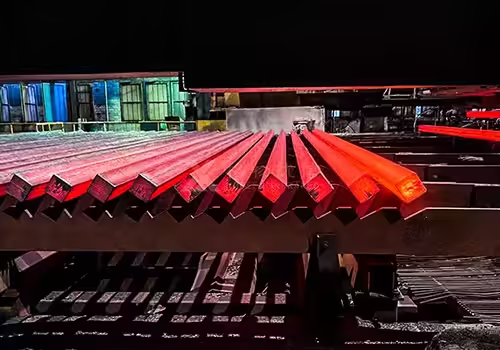
When deciding between billet steel vs forged, consider these factors:
- Required tolerances
- Stress and load conditions
- Aesthetic or functional priority
- Budget constraints
- Available machinery and tools
If your project involves fine detailing, high aesthetics, and predictable performance, billet steel is often the better route. On the other hand, if durability and shock absorption are key, forged steel may provide better outcomes.
Conclusion
The choice between billet steel vs forged should be based on application-specific demands rather than general assumptions. While forged steel continues to play an essential role in heavy-duty applications, billet steel brings significant advantages in precision, uniformity, and surface finish. For many projects, especially in industries that prioritize tight tolerances and clean aesthetics, billet steel offers a superior solution.
Ultimately, understanding the benefits of each material helps you make an informed, cost-effective decision that aligns with your goals.
FAQ
What is the main difference between billet steel and forged steel?
The core distinction in the comparison of billet steel vs forged lies in how each material is produced. Billet steel is manufactured through a continuous casting and rolling process, resulting in a uniform and clean internal structure. In contrast, forged steel is shaped by applying compressive forces like hammering or pressing, which alters its grain flow to enhance toughness. While both serve different engineering purposes, understanding this primary difference is essential when selecting between billet steel vs forged for precision or durability needs.
Is billet steel stronger than forged steel?
In terms of overall impact resistance and toughness, forged steel generally has the upper hand due to its compressed grain structure. However, when it comes to consistent strength, tighter tolerances, and high-precision machining, billet steel is often the superior choice. When evaluating billet steel vs forged, billet steel offers strength that is more uniform and predictable, which is critical in industries requiring exact specifications and repeatable performance.
Which is more expensive, billet or forged steel?
The cost factor in billet steel vs forged comparisons can be complex. Forged steel often incurs higher production costs due to labor-intensive forging techniques and potential post-processing requirements. On the other hand, billet steel may have a higher initial cost but frequently leads to savings in machining, reduced waste, and shorter production times. In mass production settings, billet steel can be more economical overall.
Can billet steel be used for high-stress applications?
Yes, billet steel is highly capable in many high-stress environments, particularly where load distribution is even and precision is crucial. While forged steel may outperform in extreme impact scenarios like heavy-duty machinery or structural joints, billet steel is well-suited for performance components such as automotive engine parts or aerospace assemblies. When reviewing billet steel vs forged for high-stress use, the specific demands of the application will determine the best fit.
What industries prefer billet steel?
Several high-precision and innovation-driven industries lean heavily toward billet steel in the billet steel vs forged conversation. These include aerospace, automotive performance and customization, robotics, tool manufacturing, and medical device engineering. The reasons include billet steel’s excellent machinability, consistent grain structure, and clean surface finishes that are ideal for visible or technically complex parts.
Does billet steel rust more than forged steel?
Rust resistance in billet steel vs forged largely depends on the specific alloy composition and surface treatment rather than the forming process. Both types of steel can be prone to corrosion if left untreated. However, billet steel’s uniformity may allow for better and more even protective coatings. Regardless of the type, appropriate maintenance and environmental protection are essential to prevent rust.
Can you weld billet steel?
Absolutely. Billet steel is generally very weldable, especially when made from commonly used alloys like carbon or alloy steels. The clean and consistent structure of billet steel facilitates high-quality welds. Still, the welding technique and parameters should be selected based on the exact grade and purpose. This is an additional point of interest in the billet steel vs forged debate, as forged parts may sometimes have variable grain flows that make consistent welding more challenging.

